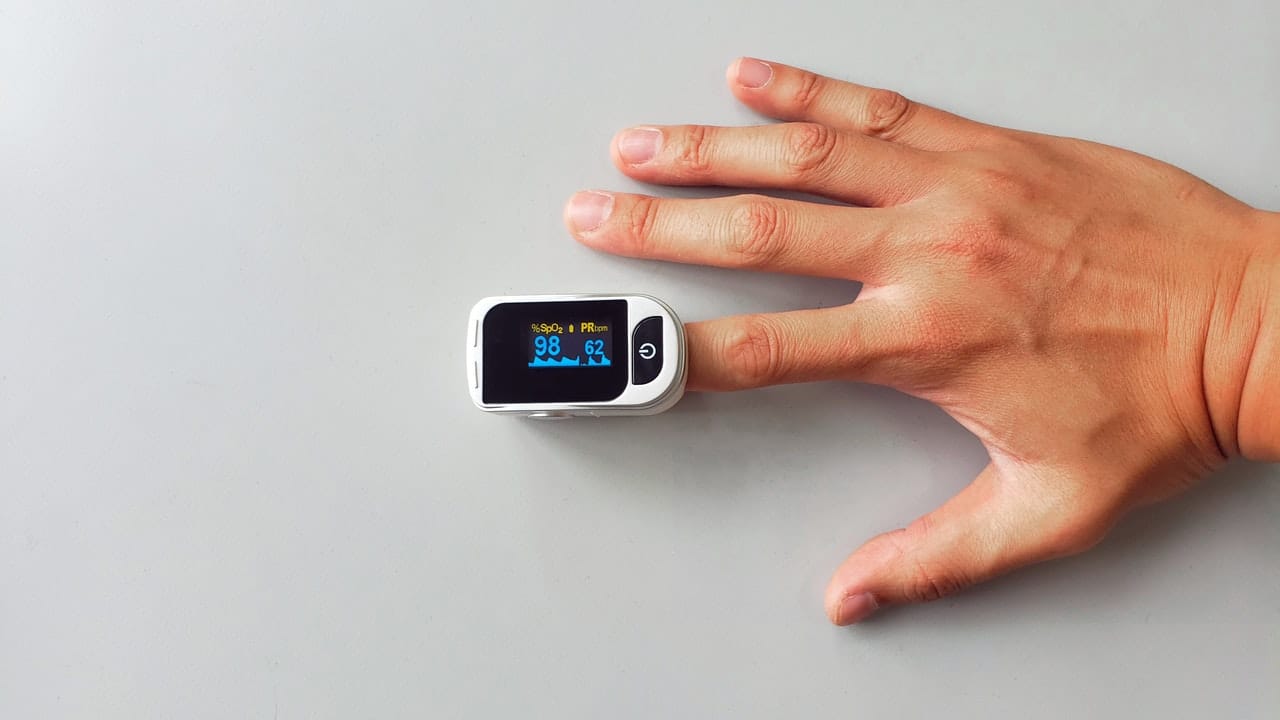Lifestyle
What is a Pulse Oximeter?

Pulse oximetry is a technique used in which to measure a person’s oxygen saturation. The reading given shows the person’s peripheral oxygen saturation level. This may not be the same as an arterial oxygen saturation reading that would be obtained from a blood gas analysis, but is safe and effective enough to be used in a clinical setting.
The most common way to apply pulse oximetry is through a sensor device that’s usually placed on the person’s earlobe or fingertip. In the case of an infant, the sensor may be placed across the foot instead. Two wavelengths of light are then passed through the body part to a photodetector. This measures each of the wavelengths’ changing absorbance levels, enabling it to determine the absorbance level due to the pulsing arterial blood.
An alternative technique to that above is reflectance pulse oximetry. Because this technique doesn’t need a thin section of the person’s body to place the sensor, it can be used in more places including the feet, forehead, and chest. However, there are some issues with it. One being that vasodilation and the pooling of venous blood in the head may occur due to a compromised venous return to the heart. This could cause both venous and arterial pulsations, which would skew the results.
The Pulse Oximeter
This refers to the medical device in which the oxygen saturation of a person’s blood, as well as changes in blood volume in the skin, is measured indirectly. Sometimes a pulse oximeter will be incorporated in a hospital patient’s multiparameter monitor. There are also portable pulse oximeters that run off batteries which can be used both in transit or for home blood-oxygen monitoring.
Pros of pulse oximetry
- Non-invasive
- Convenient
- Easy to use
- Can be used in various setting including operating theatre, intensive care, hospital wards, home, ambulances, and even aircraft
- Useful for those suffering from cardiac or respiratory problems
- Can be used to diagnose some sleep disorders including apnea and hypopnea
- Portable machines are helpful for pilots or mountain climbers where oxygen levels are low.
Limitations of pulse oximetry
- As it only measures hemoglobin saturation, it’s not a complete measure of respiratory sufficiency
- Doesn’t give carbon dioxide levels, bicarbonate concentration levels, or blood pH
- Low reading are easily caused by high callused skin; incorrect sensor application; hypoperfusion; or even movements (such as shivering)
- Not a complete measure of circulatory sufficiency. In cases of insufficient blood flow or anemia tissues may experience hypoxia, regardless of the high oxygen saturation levels
- Because only bound hemoglobin is measured, false readings will occur when hemoglobin binds to something other than oxygen.
When to use a pulse oximeter
- Monitoring: Anytime you want to keep an eye on your oxygen saturation level, use a pulse oximeter. Whether it’s at home, work, or during recreational activities.
- Pulmonary rehabilitation: This is an alternative to conventional therapies, and helps the person train through their dyspnea. It can significantly improve one’s exercise tolerance levels while reducing any shortness of breath at the same time.
- Home oximetry targets: Your doctor will set a target for you in terms of your ideal level of oxygen saturation and a regular flow rate should help you maintain that. Ideally, try to maintain an oxygen saturation level over 90% in all activities.
- Titration of oxygen: By adjusting the setting on your oximeter you can ensure you’re getting the right amount of oxygen at any time. Additional oxygen is required during times of physical activity or when travelling by airplane. By maintaining the lowest flow rate that gives you the correct level of oxygen saturation, you can enjoy more time away from home, and more time between refilling without the worry that you’ll run low on oxygen.

-

 News2 months ago
News2 months agoHow to Recover Deleted WhatsApp Messages without Backup (iOS/Android)
-

 News1 month ago
News1 month agoHow to Unlock iPhone if Forgot Passcode without Restore
-

 News4 months ago
News4 months agoHow to Restore Deleted Data from Android Phones without Backup
-

 Resources1 month ago
Resources1 month agoTOP 154 Niche Sites to Submit a Guest Post for Free in 2024